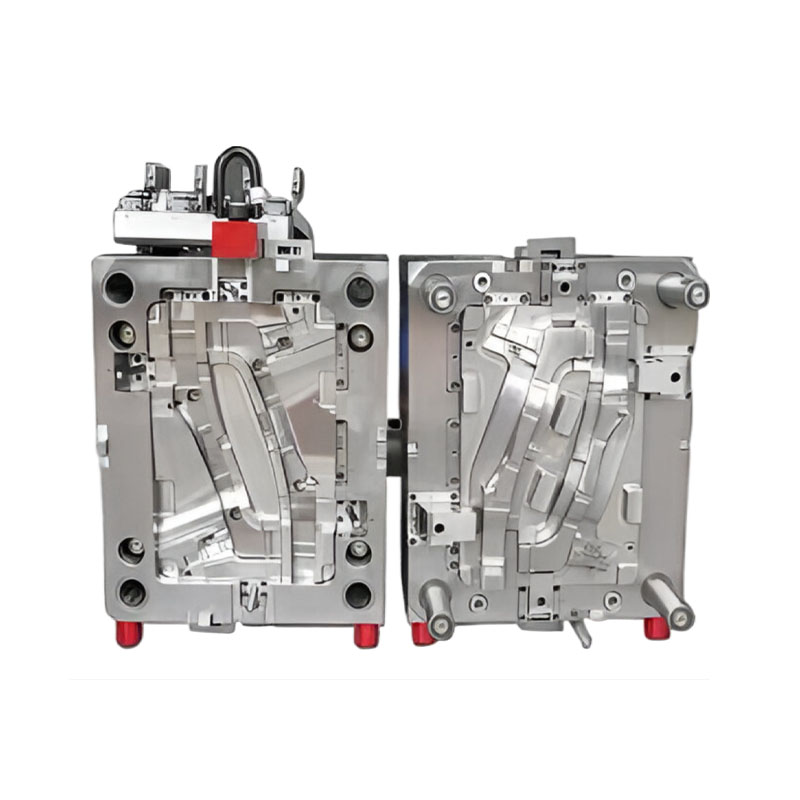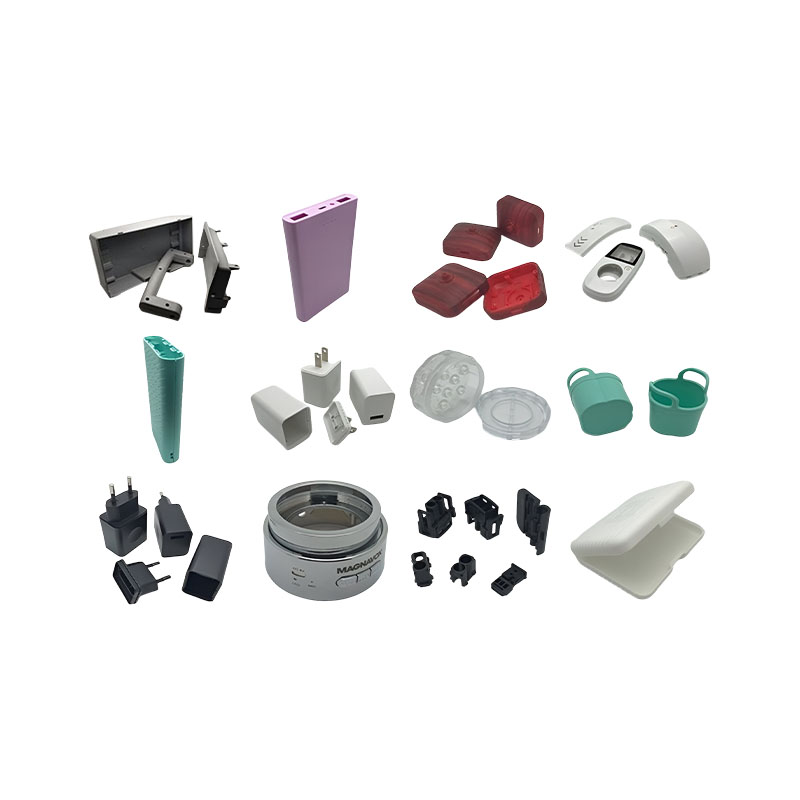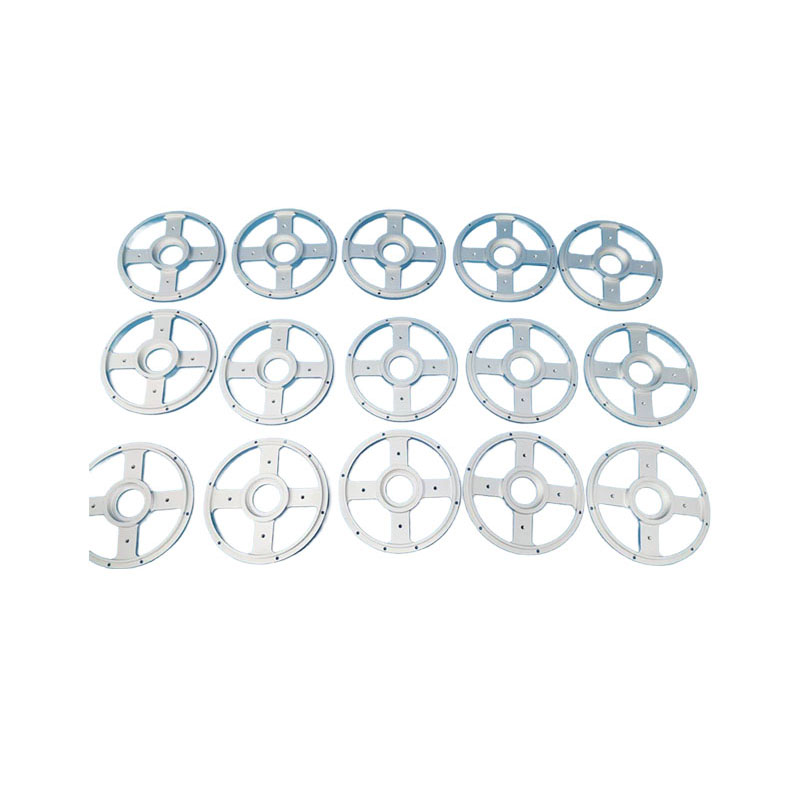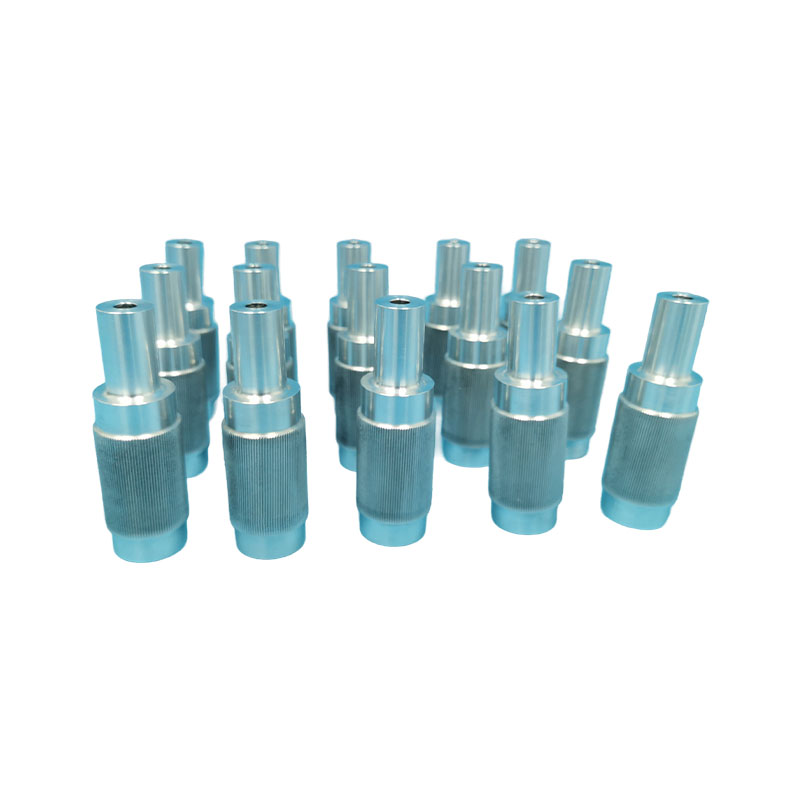How can plastic injection molding reduce weight while maintaining the structural strength of plastic parts?
Release Time : 2025-10-15
In modern manufacturing, lightweighting has become a key development direction in sectors such as automotive, consumer electronics, medical devices, and aerospace. Reducing product weight not only reduces material costs and improves energy efficiency, but also optimizes transportation and user experience. Plastic, with its much lower density than metal, is the preferred material for lightweighting. However, reducing weight often means reducing material usage, which can lead to a risk of reduced structural strength. In the plastic injection molding process, "reducing weight without sacrificing quality" is achieved. Through the coordinated application of material innovation, structural optimization, and advanced processes, modern injection molding technology has effectively balanced the contradiction between lightweighting and structural strength.
1. Microfoam Injection Molding: Internal "Piercing," External Strength
Microfoam injection molding is a key technology for achieving lightweighting. In this process, a supercritical fluid is injected into the plastic melt before it is injected into the mold, creating uniformly distributed microscopic bubbles under high pressure. Once the melt enters the mold cavity, the pressure drops sharply, causing the bubbles to expand rapidly, forming a structure filled with micron-sized closed cells. This "sandwich" structure—a dense skin layer and a lightweight foam core—significantly reduces density while maintaining excellent rigidity and impact resistance. Because the cells are extremely small and uniform, they do not significantly weaken the overall material strength. Instead, the internal structure distributes stress, improving fatigue resistance.
2. Structural Optimization: Minimizing Material, Achieving Maximum Strength
Computer-aided engineering and topology optimization techniques enable "material distribution on demand" during the design phase. Engineers use software to simulate stress conditions, removing material from non-critical areas while retaining structural thickness in high-stress areas, creating biomimetic or lattice-like structures. For example, designing reinforcing ribs, arches, honeycombs, or hollow cavities within injection molded parts effectively improves bending and torsional stiffness while significantly reducing material usage. This "trading structure for weight" approach enables plastic parts to achieve mechanical properties equivalent to or even superior to solid structures while using less material.
3. Application of High-Strength Engineering Plastics
Material selection is fundamental to performance. Traditional general-purpose plastics like PP and PS are light but have limited strength. High-performance engineering plastics like polycarbonate, polyamide, polyoxymethylene, PBT, and reinforced materials offer higher tensile strength, rigidity, and heat resistance. By selecting these materials, parts can meet their intended use even when wall thickness or volume is reduced. For example, using 30% glass fiber-reinforced PA6 in automotive interior brackets can reduce weight by 20% while improving impact resistance and long-term durability.
4. Uniform wall thickness and transition design to avoid stress concentration
In injection molding, uneven wall thickness can lead to uneven cooling, resulting in sink marks, warping, and even localized weaknesses. Appropriate wall thickness design not only helps reduce weight but also improves overall strength. It is generally recommended to maintain uniform wall thickness and design smooth transitions at thickness changes, avoiding sharp corners or abrupt changes. This reduces stress concentration and improves fatigue life. Furthermore, properly designing the height, thickness, and root radius of ribs can effectively increase the bending stiffness of flat areas without significantly increasing weight.
5. Gas-Assisted and Water-Assisted Injection Molding: Hollow Molding, Improving Rigidity
Gas-assisted and water-assisted injection molding involve injecting inert gas or high-pressure water after the melt is injected, pushing the plastic against the mold wall and forming hollow channels. This process is particularly suitable for long, thick-walled, or tubular parts, such as handles, brackets, and instrument panel beams. The hollow structure reduces weight while significantly increasing the moment of inertia of the section, enhancing bending and torsional resistance. Compared to solid parts, hollow parts offer greater rigidity at the same weight, truly achieving "light yet strong."
6. Synergistic Guarantee between Process Control and Mold Design
Even with advanced designs, inadequate process control can still result in insufficient strength. Precise control of melt temperature, injection speed, holding pressure, and cooling time ensures adequate material filling, optimal molecular orientation, and low internal stress, thereby improving the mechanical properties of the finished product. Furthermore, the mold's runner design, gate location, and cooling system layout also directly impact molding quality and need to be optimized in conjunction with the product structure.
Plastic injection molding has broken through the traditional limitation of "weight reduction necessarily leads to weakness" through innovative technologies such as micro-foaming, structural optimization, high-performance materials, and hollow molding. Modern injection molded parts are not only lighter, but also stronger, more energy-efficient, and more cost-effective. In the future, with the further development of materials science and intelligent manufacturing, plastic injection molding will play a greater role in balancing lightweighting and high performance, driving the evolution of products across various industries towards more efficient and sustainable development.
1. Microfoam Injection Molding: Internal "Piercing," External Strength
Microfoam injection molding is a key technology for achieving lightweighting. In this process, a supercritical fluid is injected into the plastic melt before it is injected into the mold, creating uniformly distributed microscopic bubbles under high pressure. Once the melt enters the mold cavity, the pressure drops sharply, causing the bubbles to expand rapidly, forming a structure filled with micron-sized closed cells. This "sandwich" structure—a dense skin layer and a lightweight foam core—significantly reduces density while maintaining excellent rigidity and impact resistance. Because the cells are extremely small and uniform, they do not significantly weaken the overall material strength. Instead, the internal structure distributes stress, improving fatigue resistance.
2. Structural Optimization: Minimizing Material, Achieving Maximum Strength
Computer-aided engineering and topology optimization techniques enable "material distribution on demand" during the design phase. Engineers use software to simulate stress conditions, removing material from non-critical areas while retaining structural thickness in high-stress areas, creating biomimetic or lattice-like structures. For example, designing reinforcing ribs, arches, honeycombs, or hollow cavities within injection molded parts effectively improves bending and torsional stiffness while significantly reducing material usage. This "trading structure for weight" approach enables plastic parts to achieve mechanical properties equivalent to or even superior to solid structures while using less material.
3. Application of High-Strength Engineering Plastics
Material selection is fundamental to performance. Traditional general-purpose plastics like PP and PS are light but have limited strength. High-performance engineering plastics like polycarbonate, polyamide, polyoxymethylene, PBT, and reinforced materials offer higher tensile strength, rigidity, and heat resistance. By selecting these materials, parts can meet their intended use even when wall thickness or volume is reduced. For example, using 30% glass fiber-reinforced PA6 in automotive interior brackets can reduce weight by 20% while improving impact resistance and long-term durability.
4. Uniform wall thickness and transition design to avoid stress concentration
In injection molding, uneven wall thickness can lead to uneven cooling, resulting in sink marks, warping, and even localized weaknesses. Appropriate wall thickness design not only helps reduce weight but also improves overall strength. It is generally recommended to maintain uniform wall thickness and design smooth transitions at thickness changes, avoiding sharp corners or abrupt changes. This reduces stress concentration and improves fatigue life. Furthermore, properly designing the height, thickness, and root radius of ribs can effectively increase the bending stiffness of flat areas without significantly increasing weight.
5. Gas-Assisted and Water-Assisted Injection Molding: Hollow Molding, Improving Rigidity
Gas-assisted and water-assisted injection molding involve injecting inert gas or high-pressure water after the melt is injected, pushing the plastic against the mold wall and forming hollow channels. This process is particularly suitable for long, thick-walled, or tubular parts, such as handles, brackets, and instrument panel beams. The hollow structure reduces weight while significantly increasing the moment of inertia of the section, enhancing bending and torsional resistance. Compared to solid parts, hollow parts offer greater rigidity at the same weight, truly achieving "light yet strong."
6. Synergistic Guarantee between Process Control and Mold Design
Even with advanced designs, inadequate process control can still result in insufficient strength. Precise control of melt temperature, injection speed, holding pressure, and cooling time ensures adequate material filling, optimal molecular orientation, and low internal stress, thereby improving the mechanical properties of the finished product. Furthermore, the mold's runner design, gate location, and cooling system layout also directly impact molding quality and need to be optimized in conjunction with the product structure.
Plastic injection molding has broken through the traditional limitation of "weight reduction necessarily leads to weakness" through innovative technologies such as micro-foaming, structural optimization, high-performance materials, and hollow molding. Modern injection molded parts are not only lighter, but also stronger, more energy-efficient, and more cost-effective. In the future, with the further development of materials science and intelligent manufacturing, plastic injection molding will play a greater role in balancing lightweighting and high performance, driving the evolution of products across various industries towards more efficient and sustainable development.







